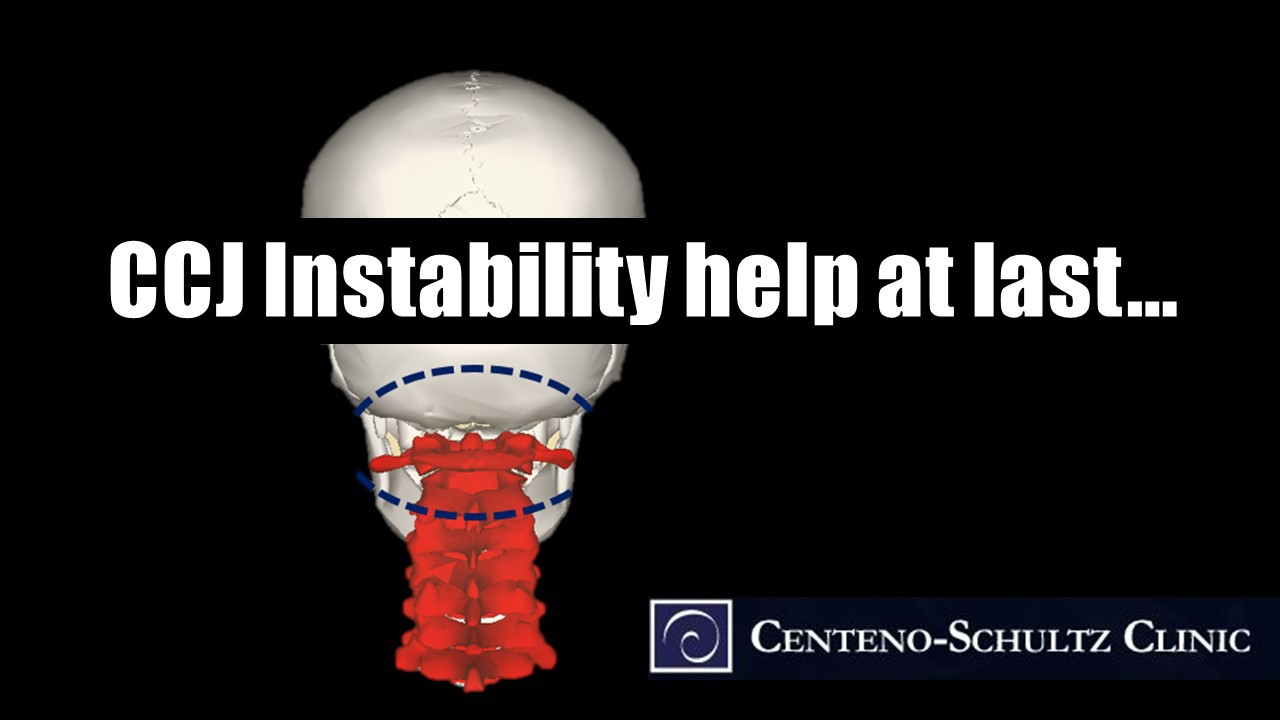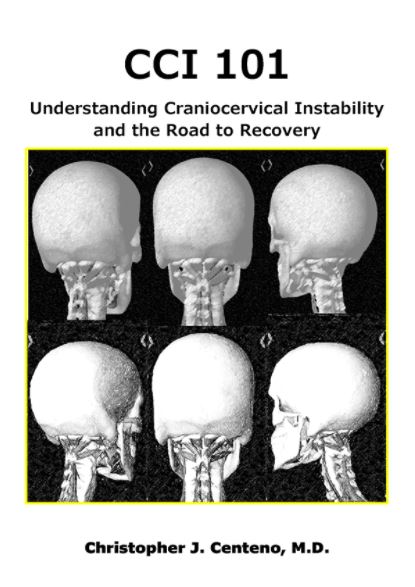Craniocervical junction (CCJ) instability it a difficult-to-treat condition. Conservative measures may provide some temporary relief, depending on how severe the instability is, but ultimately, if your instability doesn’t improve or continues to deteriorate, your orthopedic doctor is probably going to recommend an upper-cervical fusion. This is a highly invasive surgery that not only permanently freezes the movement of your upper neck, but also comes with significant complications. So is there a way to treat CCJ instability without surgery?
Before we address this question, let’s first define CCJ instability.
What Is CCJ Instability?
The upper part of the neck is called the craniocervical junction (CCJ). It starts at the bottom segment of the skull and includes the C1 vertebra (atlas bone) and the C2 vertebra (axis bone). These two vertebrae fit together like a puzzle. The facet joints in these vertebrae are, in fact, the most mobile joints in the spinal column, allowing for both nodding and right and left head rotation as well as other motions. So you can imagine how detrimental a fusion surgery, which turns the CCJ into a solid piece of bone, would be to neck and head movement.
In addition to the bones and joints, there are ligaments (think duct tape) that support these spinal structures. The alar and the transverse are the main ligaments, and they actually hold your head on, stabilizing the upper neck when nodding or rotating the head.
What Causes CCJ Instability?
When head trauma occurs, this can cause the alar or transverse ligaments to become injured, creating CCJ instability. So what kind of head trauma are we talking about here? A few examples follow:
- A whiplash type of injury, such as from a car collision involving a rear-end impact (especially if the head hits the back window, such as what may occur in a pickup truck)
- A jolt to the neck or head (perhaps while playing an aggressive sport)
- An object falling on the head
- Placing axial loads on the neck and head (e.g., this can occur via a neck exercise that requires putting your full weight on your head)
How might you know if you have a CCJ instability or injury? Symptoms include headaches, dizziness or vertigo, disorientation, problems with vision, and/or problems with concentrating or reading. You may experience popping or clicking in the neck. When you look down, turn your head, or exercise, this can aggravate the symptoms. Chiropractic manipulation, however, may temporarily relieve the symptoms, but until the problem is addressed, the symptoms are likely to return.
Treating CCJ Instability Means Addressing the Supporting Ligaments
The key to treating CCJ instability is to treat the supporting ligaments. When the ligaments are unstable, this creates excessive motion in the neck bones, beating up the facet joints, irritating the nerves, and even causing arthritis.
For the right candidates, a same-day stem cell injection into these CCJ ligaments is available. This is an extremely precise procedure that involves performing an injection through the back of the throat (to access the alar and transverse ligaments) and should only be performed by a highly skilled interventional orthopedic physician specifically trained in this area. Fluoroscopy (real-time X-ray guidance) using contrast is required to ensure placement and proper ligament injections. It is currently only performed at the Centeno Schultz Clinic in Colorado and at our Brussels Regenexx Provider, Oreme.
We began performing this novel CCJ instability procedure in 2015 and have performed nearly 70 to date, providing an alternative to highly invasive upper-cervical fusion surgery. We’ve seen very good results (fewer headaches, return to normal activities, more stability in the neck, etc.) and are beginning the world’s first randomized controlled trial for the CCJ instability procedure. Learn more about what we’re doing with CCJ instability in Dr. Centeno’s video below:
The upshot? There is an alternative to surgery for some patients with CCJ instability. While candidacy for this procedure and the study linked above requires very specific criteria at this point, we have amassed a collection of CCJ patients who have found relief for this very difficult-to-treat condition via alar and transverse ligament stem cell injections.





